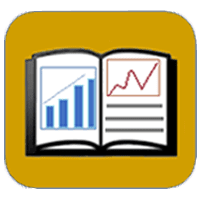Firefighter Safety
View webinar recording.
New fire management paradigms are emerging that recognize fire is inevitable, and in many cases desirable. During this webinar you will be introduced to a new process for spatial fire planning using tools such as Potential Control Line atlases (PCLs), Quantitative wildfire Risk Assessments (QRAs), and Suppression Difficulty Index (SDI). Chris Dunn, Oregon State Univ, will demonstrate how these tools can align wildfire management decisions and actions, from the development of strategic wildfire response zones to in situ wildfire response decisions that balance operational success, firefighter safety and values at risk.
View report.
This collection of essays—divided into three key categories: Risk, Culture, and Operations—daylights qualities and practices in the wildland fire service across a broad spectrum, from outdated and unwarranted to honorable and profound. We must acknowledge our current culture and its shortcomings while using its strengths to lead change.
View study.
This study found that emergency managers exhibit some of the same decision biases, sensitivity to framing, and heuristics found in studies of the general public, even when making decisions in their area of expertise. A national survey of county-level emergency managers finds that managers appear more risk averse when the outcomes of actions are framed as gains than when equivalent outcomes are framed as losses, a finding that is consistent with prospect theory. The study also found that the perceived actions of emergency managers in neighboring jurisdictions affect the choices a manager makes. In addition, our managers show evidence of attribution bias, outcome bias, and difficulties processing numerical information, particularly probabilities compared to frequencies. Each of these departures from perfect rationality points to potential shortfalls in public managers’ decision making. There are opportunities to improve decision making through reframing problems, providing training in structured decision-making processes, and employing different choice architectures to nudge behavior in a beneficial direction
View report.
This collection represents collective insight into how we operate and why we must alter some of our most ingrained practices and perspectives.
Access site.
ALERTWildfire is a consortium of three universities — The University of Nevada, Reno (UNR), University of California San Diego (UCSD), and the University of Oregon (UO) — providing access to state-of-the-art Pan-Tilt-Zoom (PTZ) fire cameras and associated tools to help firefighters and first responders: (1) discover/locate/confirm fire ignition, (2) quickly scale fire resources up or down appropriately, (3) monitor fire behavior through containment, (4) during firestorms, help evacuations through enhanced situational awareness, and (5) ensure contained fires are monitored appropriately through their demise.
Webinar recording.
Unmanned Aircraft, commonly called “Drones,” are being used more and more for public safety, research, etc. Falling prices, rising capabilities, and a favorable regulatory framework are all fueling this growth. This webinar looks at actual, real-world, Wildfire missions where these aircraft are being used successfully, and diver into their advantages and limitations.
View report.
Using epidemiology studies to understand the exposure-response relationship for PM, this study found that firefighters were at an increased risk for long-term health effects from smoke exposure. The risk for lung cancer mortality increases nearly linearly with exposures over time and is more strongly influenced by exposure duration than are the risks of death from cardiovascular or ischemic heart disease. On the other hand, the risk of cardiovascular mortality rises steeply for doses in the range we estimated for firefighter exposures but flattens out at higher exposures to PM. The data presented in this paper clearly identify the crews and activities most likely to exceed occupational exposure limits and firefighters may have a an increased health risk from smoke exposures.
View webinar recording.
This seminar was presented by W. Matt Jolly and recorded by the USFS, RMRS, Missoula Fire Sciences Laboratory.
View story map.
This study introduces a number of newer concepts and methods related to transboundary risk governance for the state of Arizona. The methods fill a gap in existing risk assessment efforts by explicitly identifying transboundary exposure. We show how the methods and results can be used to better define the scale of risk and design effective risk governance institutions. Improving scale recognition within existing transboundary risk governance systems can help reduce inefficiencies in risk planning.
View study.
This study seeks to examine the relationships between a set of NFDRS fire danger indices (Fire Danger Ratings, Staffing Level and the Ignition Component) and measures of fire activity (fire occurrence and final fire size) across the entire conterminous US over an 8-year period. We reveal that different regions of the US display different levels of correspondence between each of the fire danger indices and recorded fire activity. Areas in the Southern and Eastern Geographic Area Coordination Centers (GACCs) exhibit weaker correlations than those in the Northwest, Northern Rockies, Great Basin and Northern California GACCs. Peaks in fire occurrence are shown to occur at mid–low values of fire danger whereas final fire sizes increase monotonically with each fire danger index. Our findings appear to align with perceived shifts in management practices currently employed across the US and indicate that the ability of the NFDRS to apportion the resources required to combat large fires is in general well developed.






